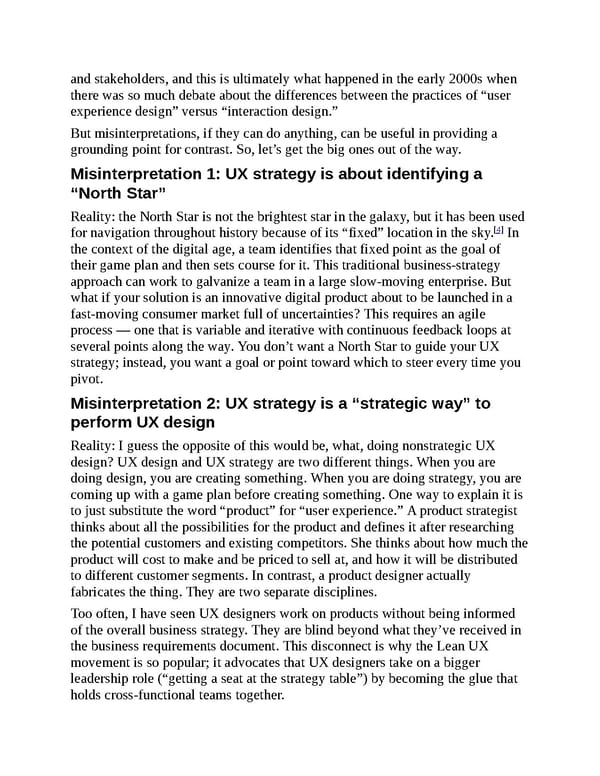and stakeholders, and this is ultimately what happened in the early 2000s when there was so much debate about the differences between the practices of “user experience design” versus “interaction design.” But misinterpretations, if they can do anything, can be useful in providing a grounding point for contrast. So, let’s get the big ones out of the way. Misinterpretation 1: UX strategy is about identifying a “North Star” Reality: the North Star is not the brightest star in the galaxy, but it has been used [4] for navigation throughout history because of its “fixed” location in the sky. In the context of the digital age, a team identifies that fixed point as the goal of their game plan and then sets course for it. This traditional business-strategy approach can work to galvanize a team in a large slow-moving enterprise. But what if your solution is an innovative digital product about to be launched in a fast-moving consumer market full of uncertainties? This requires an agile process — one that is variable and iterative with continuous feedback loops at several points along the way. You don’t want a North Star to guide your UX strategy; instead, you want a goal or point toward which to steer every time you pivot. Misinterpretation 2: UX strategy is a “strategic way” to perform UX design Reality: I guess the opposite of this would be, what, doing nonstrategic UX design? UX design and UX strategy are two different things. When you are doing design, you are creating something. When you are doing strategy, you are coming up with a game plan before creating something. One way to explain it is to just substitute the word “product” for “user experience.” A product strategist thinks about all the possibilities for the product and defines it after researching the potential customers and existing competitors. She thinks about how much the product will cost to make and be priced to sell at, and how it will be distributed to different customer segments. In contrast, a product designer actually fabricates the thing. They are two separate disciplines. Too often, I have seen UX designers work on products without being informed of the overall business strategy. They are blind beyond what they’ve received in the business requirements document. This disconnect is why the Lean UX movement is so popular; it advocates that UX designers take on a bigger leadership role (“getting a seat at the strategy table”) by becoming the glue that holds cross-functional teams together.
 UX Strategy: How to Devise Innovative Digital Products that People Want Page 16 Page 18
UX Strategy: How to Devise Innovative Digital Products that People Want Page 16 Page 18